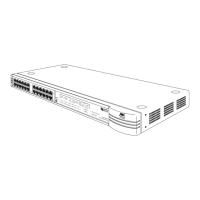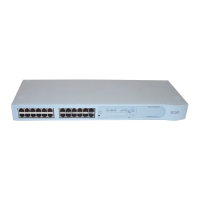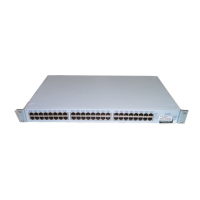Software Features Explained 27
Multicast Filtering
Your Switch supports two multicast filtering systems:
■
IEEE 802.1p, which uses the GARP Multicast Registration Protocol
(GMRP)
■
IGMP (Internet Group Management Protocol)
These systems allow the Switch to forward multicast traffic to the
endstations that are interested rather than broadcasting the traffic to the
whole network.
For more information, see
“Multicast Filtering”
on
page 189
.
Spanning Tree
Protocol
Your Switch supports the Spanning Tree Protocol (STP), a bridge-based
system that makes your network more resilient to link failure and also
provides a protection from loops — one of the major causes of
broadcast storms.
STP allows you to implement parallel paths for network traffic and uses a
loop-detection process to:
■
Discover the efficiency of each path.
■
Enable the most efficient path (that is, the one that has the highest
bandwidth).
■
Disable the less efficient paths.
■
Enable one of the less efficient paths if the most efficient path fails.
For information about STP, see
“Spanning Tree Protocol”
on
page 193
.
For information about enabling STP, see
“Configuring the Advanced
Stack Settings”
on
page 76
.
RMON
Your Switch supports RMON (Remote Monitoring), a system that allows
you to monitor LANs remotely. The Switch contains RMON probe
software that continually collects statistics about the LAN segments
connected to the Switch. If you have a management workstation with an
RMON management application, the Switch can transfer these statistics
to your workstation on request or when a pre-defined threshold is
crossed.
For more information, see
“RMON”
on
page 203
.
